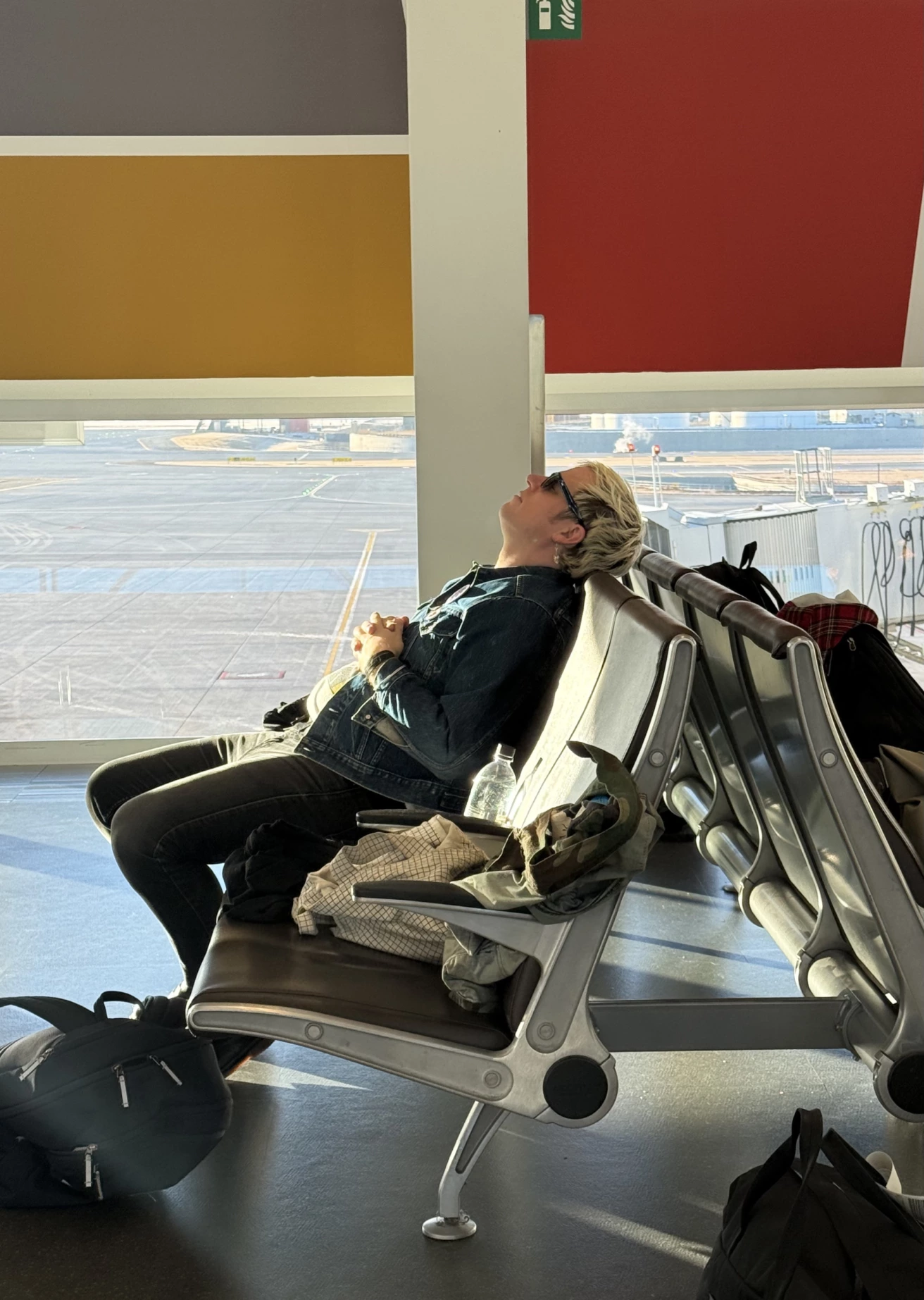The Go-Go’s 1984 LP Talk Show wasn’t just an album – it was a breaking point.
The trailblazing all-female group had burst on the world’s stage just three years prior with Beauty and the Beat. The debut album sparked multi-platinum sales and made the Go-Go’s MTV darlings. But the classic pitfalls of fame soon followed: egos, drugs and infighting.
Their second LP, 1982’s Vacation, spawned a hit single, but its sales paled in comparison to its predecessor. A lot would be riding on the band’s third album. Would the Go-Go’s return to glory or fade further from their commercial peak?
READ MORE: Why the Go-Go’s Were ‘Cross-Eyed Drunk’ in the ‘Vacation’ Video
Within the band, relationships were frayed. The Go-Go’s tried to deal with their problems in a simple way: they ignored them.
“We started out this group, us against the world. Completely unified, solid – sisters!” Jane Wiedlin recalled on Behind the Music. “And then we get famous and we totally lose that us against the world (dynamic).”
Making matters worse, frontwoman Belinda Carlisle was deep in the throes of cocaine addiction. While her bandmates tried to focus on their next album, the singer was only concerned with her next fix.
“Charlotte (Caffey) came over to my house numerous times to write with me, but I was too scattered to be creative,” Carlisle admitted in her autobiography Lips Unsealed. “It was no secret why. On tapes we made of us trying to work, I could hear myself in the background snorting coke.”
The Go-Go’s Went Overseas to Record ‘Talk Show’
In an effort to remove themselves from distractions, the Go-Go’s decided to record their third studio album in England. They enlisted U.K. producer Martin Rushnet for the project, known for his work with such bands as Generation X and the Buzzcocks.
“He was a lovely, low-key Englishman whose success had brought him a measure of wealth, stature and a particular way of working,” Carlisle recalled. “Then he ran into the Go-Go’s; we were like a storm hitting his verdant Tudor studio in Berkshire.”
READ MORE: Top 50 Albums of 1984
Rushnet’s style was to work with the girls individually on their respective parts. This left the rest of the group to get into trouble when they weren’t recording. Guitarist Charlotte Caffey — who was secretly struggling with a heroin addiction — vanished for over a week, with nobody knowing her whereabouts. Carlisle decided to head back to Los Angeles for a while, reconnecting with her boyfriend and (separately) her drug dealer. The only one who seemed to keep things low-key was Gina Schock. The drummer was sick during the sessions and later found out she needed open-heart surgery.
Why ‘Enraged’ Jane Wiedlin Quit the Go-Go’s
With so many combustible parts, all the Go-Go’s needed was a spark to explode. That came via Wiedlin, the band’s rhythm guitarist and one of their main songwriters, who’d grown tired of being in the shadows. She wanted to sing, specifically on the song “Forget That Day,” which was personal to her. When the rest of the band pushed back at the idea, things turned ugly.
“That just enraged me. I was so mad about that,” Wiedlin later admitted.
“I felt guilty because it was her song and she wanted to sing it, but in the end I felt I was the lead singer and that’s the way it is in the band,” Carlisle explained. “That’s just the way it is.”
Wiedlin’s frustrations extended beyond the studio. She reportedly smashed a mirror in her hotel room out of anger towards her bandmates.
The tensions were only exacerbated when Wiedlin and Caffey – who had handled the brunt of the songwriting on the Go-Go’s first two albums and thus received more royalties than the rest of the band – were informed that it would be an even split on the new LP.
“There were fights,” Caffey recalled. “Physical, verbal. There were big fights.”
Infuriated, Wiedlin quit the band during those sessions in England, but was convinced to stay on with the group through Talk Show’s March 19 release and ensuing tour. The album was a commercial disappointment, and only one single, “Head Over Heels,” made it in the Billboard Top 20, peaking at No. 11.
Watch the Go-Go’s Video for ‘Head Over Heels’
Outwardly, the girls seemed fine, smiling for the cameras and insisting in interviews that they were the best of friends. Behind the scenes, they were done.
“‘Yeah, love it! Everything’s great! We’re better than ever! This album is the best album we’ve ever made!’” Wiedlin recalled of her posturing for the press. “You know, the bullshit that you just say because what else are you going to say?”
Wieldand was gone following the end of the tour. Officially, the Go-Go’s lasted a little bit longer before Carlisle and Caffey disbanded the group in ‘85. Reunions would follow in the ‘90s and 2000s, with the band’s members eventually mending their fences. Yet Talk Show will always represent the closure of the Go-Go’s classic run.
“When we had gone to England to make Talk Show, I feared it might be the beginning of the end for the Go-Go’s,” Carlisle later reflected. “With Jane’s departure, it looked like the end had arrived.”







